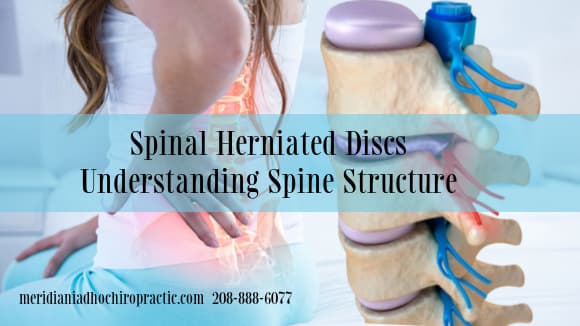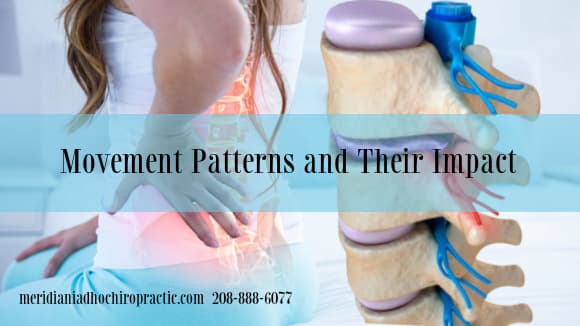Understanding Chiropractic And Herniated Spinal Discs: A Comprehensive Guide
Chiropractic And Herniated Spinal Discs are closely linked, with chiropractic care offering potential relief and solutions for this common condition. In this blog, we will explore the mechanics of herniated discs, their causes, and how chiropractic approaches can help restore spinal health.
Table of Contents
- Introduction to Herniated Spinal Discs
- Understanding the Spine Structure
- The Role of Subluxation
- Anatomy of the Intervertebral Disc
- Nerve Compression and Its Effects
- Conservative Treatment Options
- The Importance of Posture
- Movement Patterns and Their Impact
- Understanding Recurrence After Surgery
- Conclusion: Maintaining Disc Health
- FAQ About Chiropractic And Herniated Discs
Introduction to Herniated Spinal Discs
A herniated disc occurs when the soft inner gel of the disc bulges out through the tough outer layer. This condition can lead to significant discomfort and complications, primarily due to nerve compression. Understanding the mechanics behind herniated discs is crucial for effective treatment and prevention.
Chiropractic care is often sought as a noninvasive approach to managing symptoms and promoting healing. It focuses on restoring proper spinal alignment and function, which can alleviate pressure on affected discs.

Herniated Spinal Discs-Understanding the Spine Structure
The spine is a complex structure comprising vertebrae, intervertebral discs, and surrounding tissues. Each vertebra is separated by discs that act as shock absorbers, providing flexibility and support. The spine is divided into three central regions: cervical, thoracic, and lumbar.
Each region has its unique characteristics and functions. The cervical spine supports the head and allows movement, while the thoracic spine protects the heart and lungs. The lumbar spine bears much of the body’s weight and is particularly susceptible to injury and degeneration.
The Role of Subluxation- Spinal Herniated Discs
Subluxation refers to a misalignment of the vertebrae that can disrupt normal spinal function. This misalignment often leads to increased pressure on the intervertebral discs, contributing to conditions like herniated discs. When vertebrae shift out of their proper position, they can irritate nearby nerves and lead to inflammation.
Chiropractors aim to correct subluxations through adjustments, which can restore alignment and improve overall spinal health. By addressing subluxation, patients may experience relief from symptoms associated with herniated discs.
Anatomy of the Intervertebral Disc
The intervertebral disc comprises two main components: the nucleus pulposus and the annulus fibrosus. The nucleus pulposus is the gel-like center that provides cushioning and flexibility. The annulus fibrosus is the tough outer layer that surrounds the nucleus and helps contain it.
The nucleus can bulge out when a disc herniates, often compromising the annulus. This condition can lead to nerve compression and pain, as the disc material may encroach on nearby spinal nerves.
Nerve Compression and Its Effects
Nerve compression is a significant consequence of herniated discs. When the bulging disc material presses against spinal nerves, it can cause pain, numbness, and weakness in the areas supplied by those nerves. Depending on the affected spinal region, this phenomenon can manifest in various ways.
Interestingly, individuals can have a herniated disc without experiencing pain at the site of injury. Symptoms may be referred to other areas, such as the arms or legs, complicating diagnosis and treatment.

Herniated Spinal Discs & Conservative Treatment Options
Conservative treatment options for herniated discs focus on alleviating symptoms and promoting healing without surgery. Common approaches include chiropractic adjustments, physical therapy, and lifestyle modifications. Each method aims to restore function and reduce pain.
Chiropractic care is vital in realigning the spine and improving joint mobility. Patients may also benefit from exercises strengthening the core and supporting spinal health. These combined efforts can often lead to significant improvements and help avoid surgical interventions.
The Importance of Posture
Posture plays a crucial role in spinal health and the integrity of intervertebral discs. Poor posture can lead to misalignments that exacerbate existing disc issues. For instance, a forward head posture or excessive curvature in the lumbar region can place undue stress on the discs.
Maintaining optimal posture helps distribute body weight evenly across the spine, reducing pressure on specific discs. Additionally, good posture allows for proper movement mechanics, which is essential for disc health.
Strategies for Improving Posture
- Awareness: Regularly check your posture throughout the day, especially when sitting or standing for long periods.
- Ergonomic Adjustments: Invest in ergonomic furniture that supports a healthy spine alignment.
- Strengthening Exercises: Incorporate exercises that strengthen the core and back muscles, which support proper posture.
- Stretching: Regularly stretch tight muscles that may pull the spine out of alignment.

Movement Patterns and Their Impact
Movement patterns significantly influence spinal health and the condition of herniated discs. Repetitive or improper movements can stress the discs and surrounding structures.
For example, lifting with the back instead of using the legs can increase the risk of injury. Understanding proper lifting techniques and movement mechanics is vital for preventing further disc damage.
Key Movement Strategies
- Hip Hinging: When bending to lift, hinge at the hips instead of bending at the waist to maintain a neutral spine.
- Engaging Core Muscles: Activate your core muscles to provide stability and support during movements.
- Regular Breaks: Take breaks during prolonged activities to stretch and reposition yourself.
- Mindful Movements: Be intentional with movements, avoiding sudden or jerky actions that can strain the spine.
Understanding Recurrence After Surgery
Even after surgical intervention for disc issues, the risk of recurrence remains if underlying causes are not addressed. Many patients experience a return of symptoms due to persistent segmental, postural, or movement problems.
It’s essential to recognize that surgery may remove the offending tissue. Still, if the factors contributing to the initial injury are not corrected, new issues can develop, potentially at adjacent spine levels.
Preventing Recurrence
- Comprehensive Rehabilitation: Follow a rehabilitation program that includes chiropractic care, physical therapy, and exercises tailored to your needs.
- Regular Check-ups: Schedule regular appointments with your chiropractor to monitor spinal health and alignment.
- Education: Learn about proper body mechanics and lifestyle changes that promote spinal health.
- Healthy Lifestyle: Maintain a healthy weight and engage in regular physical activity to support overall spinal function.
How To Maintain Disc Health
Maintaining the health of intervertebral discs is a multifaceted approach that involves addressing posture, movement patterns, and any underlying spinal issues. Chiropractic care can be integral in this process, providing adjustments and guidance to promote optimal spinal alignment and function.
It is vital to remain proactive about spinal health, especially after experiencing disc issues or undergoing surgery. By implementing strategies to enhance posture and movement, individuals can significantly reduce the risk of recurrence and maintain the integrity of their discs.

FAQ About Herniated Spinal Discs
What is chiropractic care for herniated discs?
Chiropractic care for herniated discs involves spinal adjustments and therapeutic techniques that aim to restore proper alignment, reduce pain, and improve mobility.
Can chiropractic treatment prevent surgery for herniated discs?
In many cases, chiropractic treatment can alleviate symptoms and improve disc health, potentially preventing the need for surgical intervention.
How long does it take to see improvement with chiropractic care?
Improvement varies by individual, but many patients report decreased pain and improved function within a few weeks of consistent chiropractic care.
Is chiropractic care safe for herniated discs?
Chiropractic care is generally safe for herniated discs when performed by a qualified practitioner. It is essential to consult with a healthcare provider to determine the best approach for your specific condition.
Chiropractic Care Meridian Idaho
Transforming Lives with Comprehensive Chiropractic Care for Your Spinal HealthAnd Wellbeing
If you’re ready to address your low back pain and restore your health, schedule an appointment today with Dr. Todd Pickman, Chiropractor at Meridian Idaho Gonstead Spine and Wellness. Experience a personalized approach to chiropractic care that delivers results. Visit us at 3085 East Magic View Drive, Suite #180, Meridian, ID 83642, or call us at (208) 888-6077 to book your consultation.
